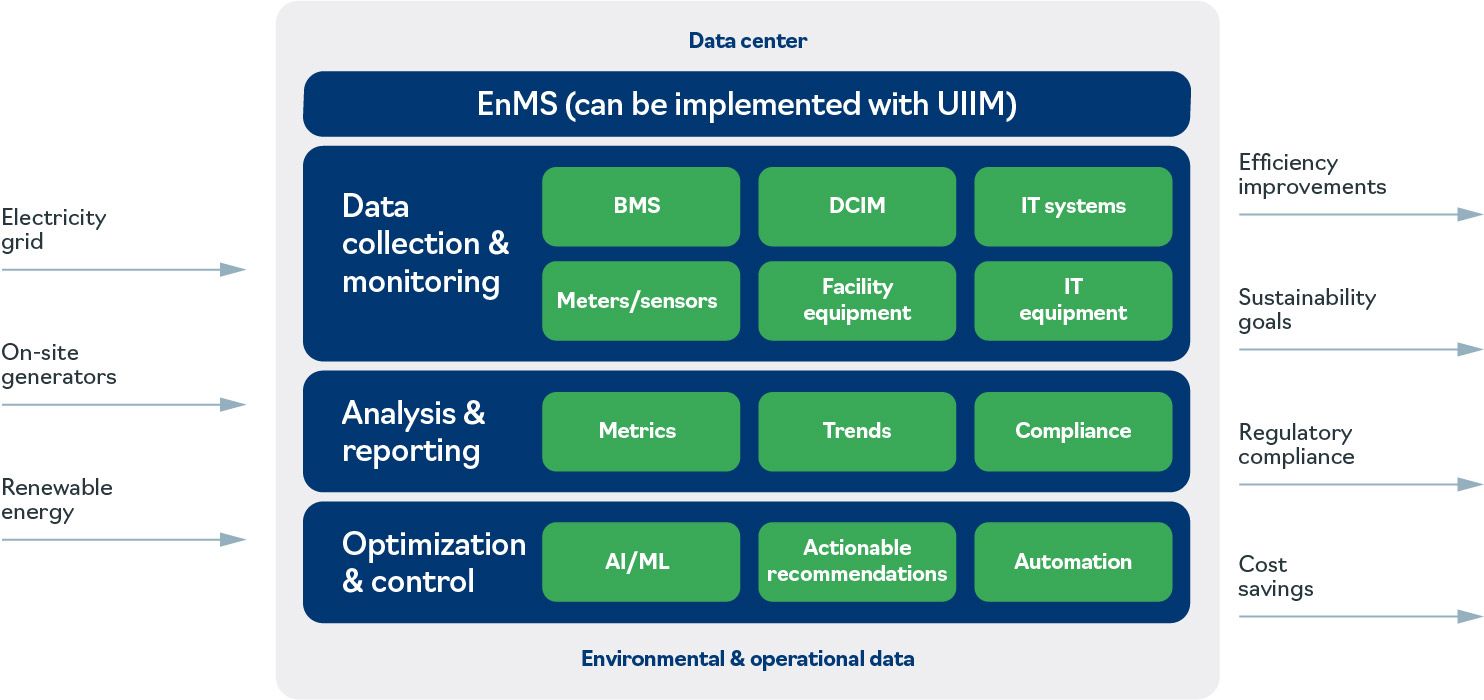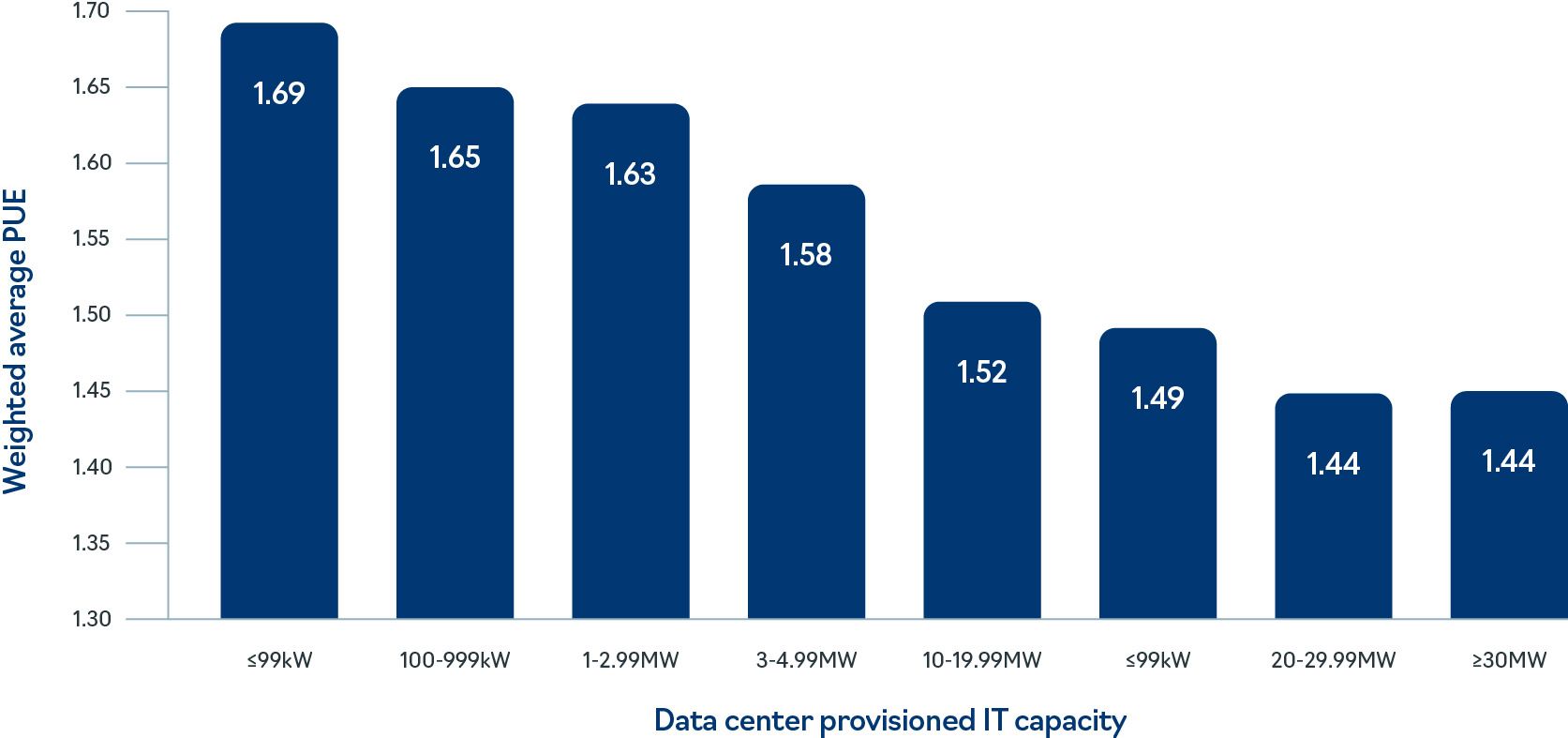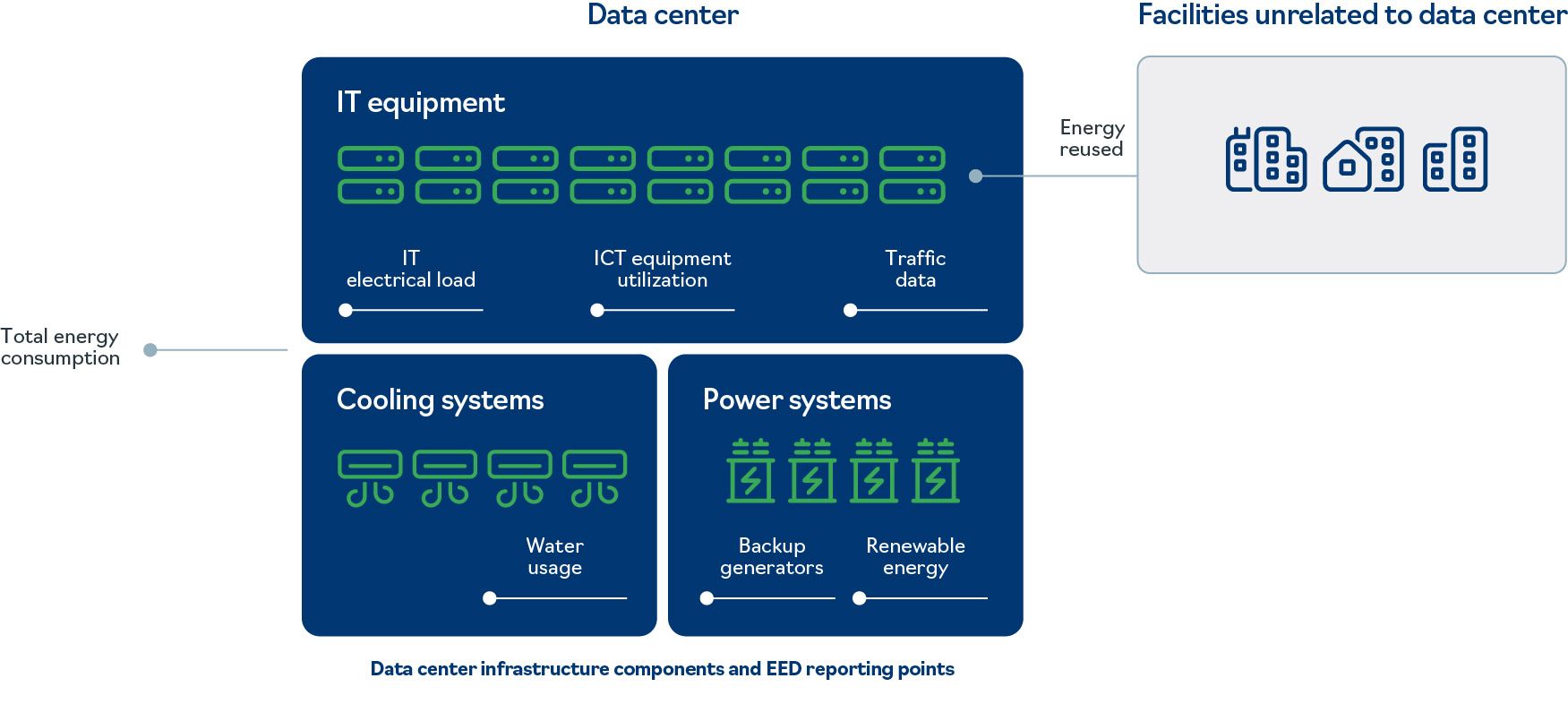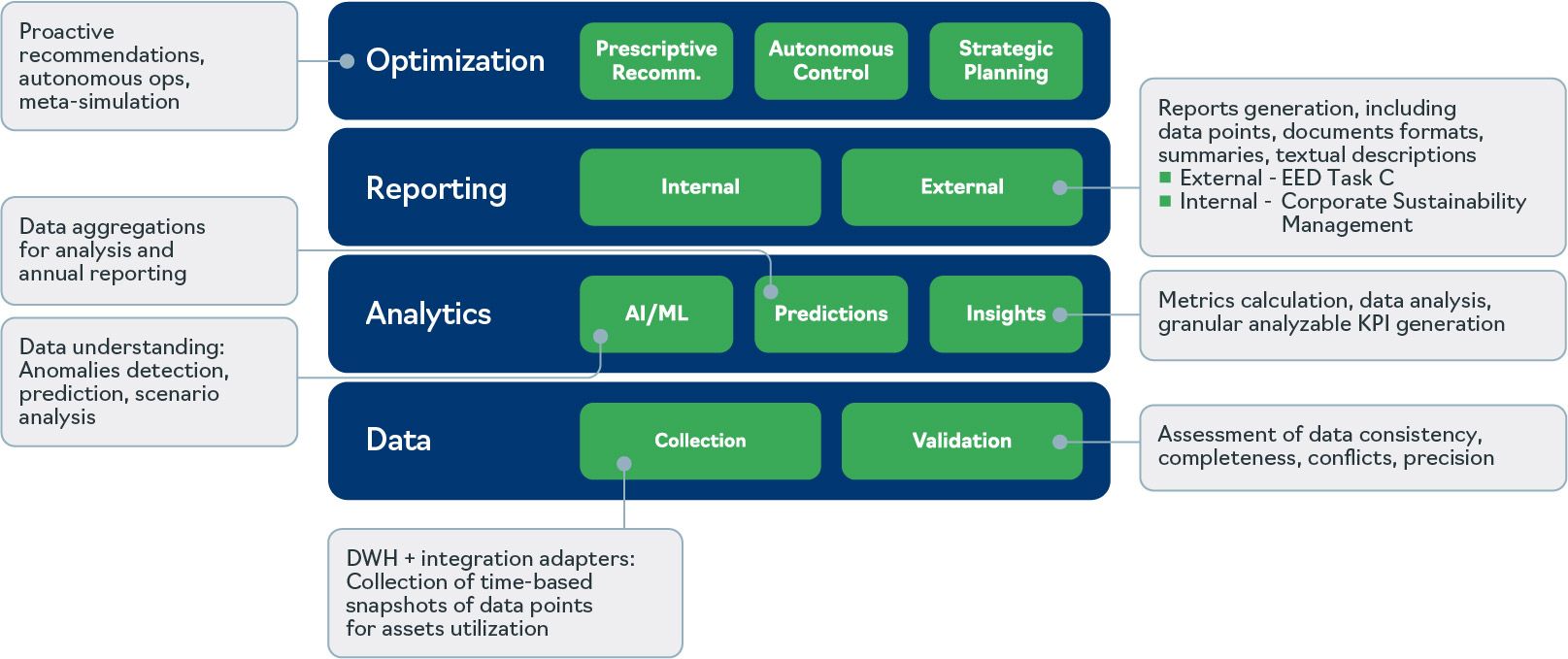White Paper
Bytes and Watts: Energy Efficiency Directive (EED) - A technical guide for data centers
Date: 1st May 2024
Author: Jeff Safovich, CTO RiT Tech
Energy Efficiency Directive (EED)

Introduction - Why discussing EED is crucial
The urgency of addressing our environmental challenges has never been more pronounced. Amid rising energy demands, digital transformation has expanded the footprint of data centers, integral to our everyday technology use. However, these data centers are substantial energy consumers and contribute significantly to global carbon emissions. Recognizing this, governments and international bodies are reshaping regulatory landscapes to ensure sustainable growth. Discussing the Energy Efficiency Directive (EED) is imperative as it stands at the crossroads of technology, policy, and environmental stewardship. This paper aims to unravel the complexities of EED, making it accessible and highlighting its pivotal role in driving future sustainability efforts.

The challenge of data center sustainability
Data centers are the backbone of the digital economy, and they are also among the largest industrial energy consumers. The sustainability of data centers revolves around their vast energy consumption, water use, and the generated heat impacts on the environment. As digital data consumption skyrockets, so does the need for data storage, processing, and transmission, leading to a surge in data center activity and energy use. The challenge is formidable – ensuring data centers operate sustainably without hindering technological advancements and digitalization benefits. Therefore, addressing the energy efficiency of data centers is not just a technical necessity but a critical environmental strategy.

Why EED was introduced
The European Union (EU), recognizing the critical role of energy efficiency in achieving environmental and economic goals, has been proactive in strengthening its energy policies. The introduction of the Energy Efficiency Directive (EED) is a cornerstone of these efforts. Rooted deeply within the broader framework of the EU Green Deal, the EED aims to reduce greenhouse gas emissions, improve energy security, and reduce dependency on external energy suppliers. Initially introduced in 2012 and later revised in 2018, the EED sets forth ambitious targets to achieve a minimum of 32.5% improvement in energy efficiency by 2030 and a climate-neutral continent by 2050.
Specifically for data centers, the directive addresses the increasingly critical role these infrastructures play in the overall energy consumption in the EU. By integrating principles and regulations from the EED, the data center industry is encouraged to adopt more sustainable energy consumption practices. This policy context underlines a shift from voluntary to mandatory measures, ensuring that data center operators not only comply but also contribute to the broader environmental objectives set forth by the EU. This approach highlights a significant evolution from earlier, less stringent policies, reflecting an increasing acknowledgment of the strategic role of energy management in environmental sustainability

What EED is all about
In technical terms, the EED introduces concepts like ‘Energy Audits’, which are systematic examinations to determine how, where, and how much energy is used and what measures can increase efficiency. Another key term coined by the European Commission is ‘Energy Management Systems’ (EnMS), which relate to ongoing processes of monitoring, controlling, and conserving energy in a building or organization. The directive also underlines the importance of ‘Primary Energy Consumption’ and ‘Final Energy Consumption’, distinctions crucial for understanding energy flow and efficiencies at different stages. It mandates Member States to create incentive schemes and policies to drive improvements in energy efficiency across various sectors. Such composition of EnMS can be constructed by a combination of multiple tools, or by implementing a UIIM (Universal Intelligent Infrastructure Management).


Who is Impacted by EED reporting?
The EED reporting requirements impact a broad range of stakeholders operating within the EU. The directive specifies that all data centers with an IT installed power demand exceeding 500 kW are required to regularly submit data on their energy use, and sustainability. This includes both existing facilities and new constructions. The scope of impact extends beyond the operators to include cloud service providers, colocation centers, and large enterprises that host significant data processing facilities.
Essentially, any organization that has a significant energy usage footprint within the EU is subject to the EED’s stipulations, which aim to push the envelope on energy conservation and efficiency practices. This broad applicability ensures that energy efficiency becomes a pervasive goal across various sectors of the economy.
Furthermore, the directive indirectly influences vendors and service providers associated with data centers, as these entities must adapt their products and services to meet the sustainability needs of their clients. Additionally, investors and customers are increasingly using EED compliance as a criterion for engagement, thus broadening the directive’s influence across the economic landscape. To understand the diverse energy performance landscape that the EED aims to address, consider how data center efficiency, as measured by PUE (Power Usage Effectiveness), can vary depending on the facility’s size and IT capacity:
(Based on Uptime Institute research from February 7, 2024: “Large data centers are mostly more efficient, analysis confirms”)
Weighted average PUE by data center IT capacity


EED Tasks A, B, C
The EU has structured the EED obligations around three key tasks to systematically enhance data center sustainability:
- Task A: Focuses on creating a unified reporting mechanism for data centers across the EU. This task is essential because it standardizes the data collection process, making it easier to assess and manage energy use across different facilities.
- Task B: Concerns the establishment of minimum performance standards for existing and new data centers. The goals here are to ensure that all data centers meet a basic level of energy efficiency, which will elevate the overall energy performance of the sector.
- Task C: Involves creating an EU repository for reported data, which will be used to analyse trends, share best practices, and inform policy decisions.
These tasks are still in progress, with ongoing adjustments and improvements aiming to reflect
the current needs and technological advancements in the data center industry.

Reporting responsibilities
The EED delineates specific reporting responsibilities for different types of organizations within the data center ecosystem:
- Data center owners: They are primarily responsible for the overall energy usage reporting and ensuring compliance with the EED’s broader requirements.
- Colocation providers: These entities must report on the shared infrastructure’s energy consumption but often rely on their tenants to provide the necessary data regarding individual energy use, especially around energy consumption by their IT equipment.
- Tenants in colocation data centers: Tenants are responsible for reporting their IT energy usage within the colocation facility.
Departments/Teams Involved:
- Sustainability strategy team: Develops overarching sustainability goals and ensures alignment with EED requirements.
- Project management team: Oversees the implementation of EED-related projects and initiatives.
- IT and data center operations: Critical for deploying tools and practices that directly influence energy consumption and data reporting.
- Compliance and reporting team: Manages the data collection, analysis, and submission of reports to respective authorities.
- Executive leadership: Makes strategic decisions based on report insights and sustainability trends.
These roles underscore a comprehensive strategy involving multiple departments to ensure effective EED compliance and reporting.
Bridging between the silos of multi-disciplinary teams, traditionally working apart, is both a significant challenge and a key for achieving corporate sustainability goals.

Reporting requirements
Under the Energy Efficiency Directive (EED), data centers are required to report a comprehensive set of metrics and data points aimed at evaluating their energy performance and sustainability. The core reporting requirements focus on the following.
Input data:
- Building Information: Includes data center name/ID, location, and type (enterprise, colocation, or co-hosting).
- Domain of Control: Specifies areas of control such as physical building, mechanical & electrical plant, data floor, racks, IT equipment, operating system, software, and business processes.
- Operation Data: Includes electrical and cooling infrastructure redundancy levels, number of modular capacity steps or separately provisioned halls, and number of racks.
- Energy and Sustainability Indicators: Metrics related to building and room floor areas, rated IT electrical load, total energy consumption, contributions from backup generators (including type of fuel and functions), electrical grid functions, battery capacity and time, ICT equipment energy consumption, water input, and renewable energy consumption. Also includes data on incoming and outgoing data traffic
-
Various metrics are to be derived from the submitted data to quantify energy and sustainability performance:
- PUE (Power Usage Effectiveness): Total data center energy consumption divided by ICT equipment energy consumption.
- WUE (Water Usage Effectiveness): Annual water input divided by ICT equipment energy consumption.
- ERF (Energy Reuse Factor): Energy reused divided by total data center energy consumption.
- REF (Renewable Energy Factor): Renewable energy consumption divided by total data center energy consumption.
Each of these metrics is aimed to align with internationally recognized standards, like the ISO/IEC 30134 series, ensuring that data centers reporting is consistent, reliable, and unambiguous. By leveraging ISO/IEC standards, data centers can ensure that their reporting is consistent, comparable, and credible, facilitating sector-wide benchmarks and performance improvements.


Potential data sources
To fulfill the requirements of the EED reporting, data centers can utilize a variety of systems and equipment capable of collecting and managing essential data across different metrics.
Here are some of such potential data sources:
Systems:
Universal Intelligent Infrastructure Management (UIIM): Comprehensively collects data from facility and IT ecosystems, manages operational performance and resource utilization, integrates with external data sources, and holds unified data store for complete and comprehensive EED reporting.
Data Center Infrastructure Management (DCIM): Tracks power, environmental systems, and IT equipment performance.
Building Management Systems (BMS): Monitors total facility energy, environmental conditions, and cooling systems.
IT Management Systems (including server and virtualization management): Key for ICT equipment performance metrics.
Network Management Systems: Data on incoming and outgoing traffic.
Organizational Data Containers (e.g., Data Warehouses) Equipment: Smart meters and sensors Room/rack Power Distribution Units (PDUs) Uninterruptible Power Supplies (UPS) Energy generators Cooling infrastructure These and other data sources collectively support the detailed and accurate reporting required under the EED, facilitating better energy management and sustainability practices in data centers.
Equipment:
- Smart meters and sensors
- Room/rack Power Distribution Units (PDUs)
- Uninterruptible Power Supplies (UPS)
- Energy generators
- Cooling infrastructure
These and other data sources collectively support the detailed and accurate reporting required under the EED, facilitating better energy management and sustainability practices in data centers.

Challenges and tools
Challenges:
- Data collection: Gathering data from disparate sources can be complex and time-consuming.
- Data validation: Ensuring the accuracy and reliability of data is crucial for compliance and decision-making.
- Data cleanup: Inconsistent and incomplete data needs to be cleaned and standardized.
- Data aggregation and analysis: Aggregating data from various metrics can be challenging, yet it’s essential for comprehensive analysis.
- Reporting: Compiling the data into standardized reporting formats for regulatory submission.
Technological solutions:
- Advanced UIIM and DCIM tools: These tools can automate many aspects of data management from collection to reporting, ensuring compliance with EED regulations.
- AI and machine learning: These technologies can predict trends and optimize data center operations, further aiding in sustainability goals.
Modern technologies play a pivotal role in addressing these challenges, enabling data centers to meet EED compliance efficiently and effectively, and align them with broader corporate sustainability objectives.
UIIM Sustainability Framework

By embracing advanced tools and methodologies, organizations can go beyond mere compliance to actively leverage data for strategic decision making and sustainable growth.

Beyond EED compliance
Moving beyond mere compliance, data centers can use the rich data from EED reporting to drive broader corporate sustainability goals. This involves extending the scope of data collection and analysis to provide actionable insights that can inform strategic decisions. For example, implementing automated, AI powered solutions for IMAC (Install-Move-Add-Change) operations, maintenance and comprehensive infrastructure management can help minimize human error and optimize resource utilization. Upgrading IT infrastructure to more energy-efficient systems or implementing advanced cooling solutions can significantly reduce energy consumption. Additionally, employing Computational Fluid Dynamics (CFD) can optimize the energy efficiency of cooling systems. Another strategy might be the adoption of renewable energy sources which not only reduces the carbon footprint but also aligns with global sustainability standards. By integrating sustainability deeply with business operations, data centers can not only comply with existing regulations but also prepare for future demands and demonstrate leadership in corporate sustainability.

Future implications - anticipating changes in EED regulations
As environmental regulations evolve, the expectations from data centers regarding energy efficiency and sustainability are likely to intensify. Future amendments to the EED may introduce stricter efficiency thresholds, extensive reporting requirements, or new metrics reflecting advances in technology and sustainability practices. Data centers must stay ahead by investing in technologies that allow scalable and flexible compliance strategies. This could involve adopting more sophisticated data analytics tools or integrating AI to predict and manage energy usage more efficiently. Preparing for these potential changes means continuously monitoring regulatory landscapes, engaging with policy developments, and investing in sustainable practices that align with long-term environmental goals.

Summary and conclusion
This paper has detailed the significant role of the Energy Efficiency Directive (EED) within the data center sector, emphasizing its importance in the broader context of the European Union’s sustainability and energy efficiency goals. The directive’s stringent requirements for detailed energy audits, the implementation of energy management systems, and the nuanced understanding of primary and final energy consumption are pivotal. These elements showcase the EU’s dedication to actionable, rigorous energy conservation strategies, essential for data centers that are critical yet substantial energy consumers in our digital age.
Challenges in data collection, validation, and analysis persist, yet the integration of advanced technological tools such as Universal Intelligent Infrastructure Management (UIIM), Data Center Infrastructure Management (DCIM), and AI-enhanced systems presents valuable opportunities to overcome these obstacles. These technologies are key in optimizing data center operations and setting the stage for advanced sustainability practices. By embracing these innovations, data centers can lead the charge towards a sustainable future, aligning operational success with environmental stewardship.

References and further reading
The following sources provide additional information on the topics discussed in this paper and can serve as a resource for further study on the Energy Efficiency Directive (EED) and its implications for data centers:
- European Commission - Energy Efficiency Directive (EED)
- ISO/IEC 30134 Series Key performance indicators
- European Data Centre Association (EUDCA) - Energy Efficiency Reporting
- Green Grid - Data center metrics
- Information on various sustainability metrics used by data centers
REPORTING DEMO
Delivering EU Compliant Sustainability Reporting with XpedITe™
XpedITe is truly different as it is both universal and intelligent. Its unique capabilities go beyond traditional DCIM to provide you with deep analytics and a holistic overview of your data center’s operations.
GET IN TOUCH VIA EMAIL AT [email protected]
You can set up an exploratory meeting to discuss your organization’s needs or just touch base to ask a few questions!

